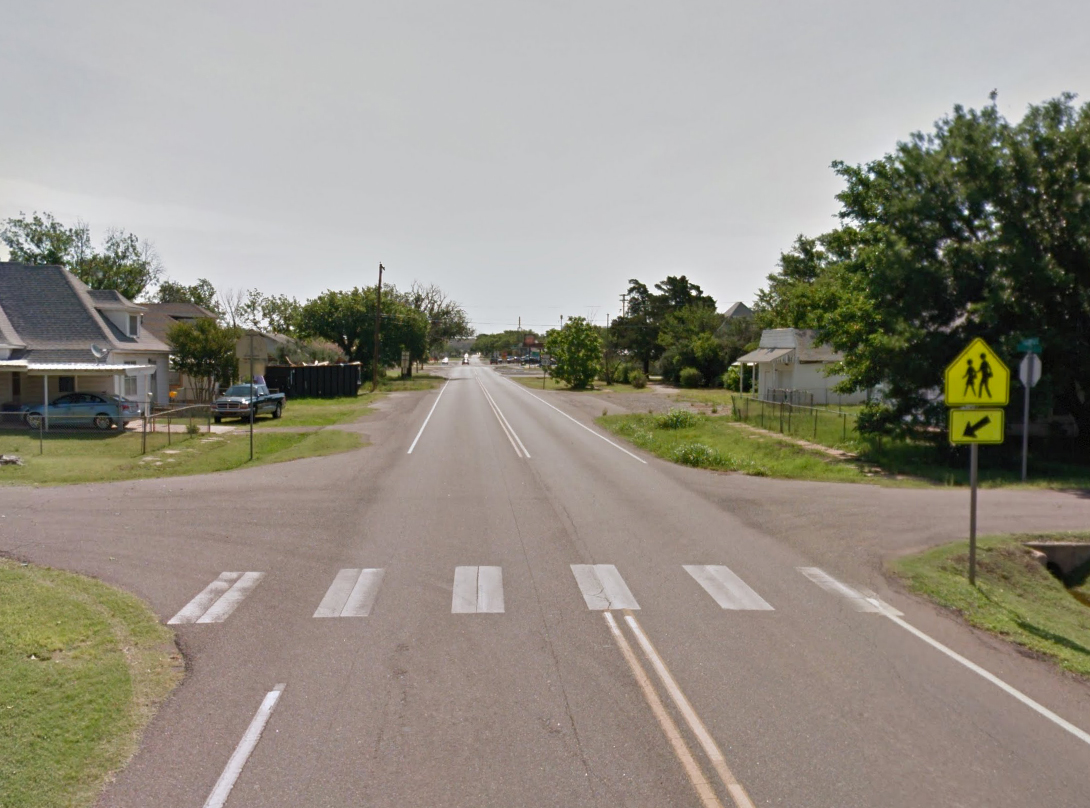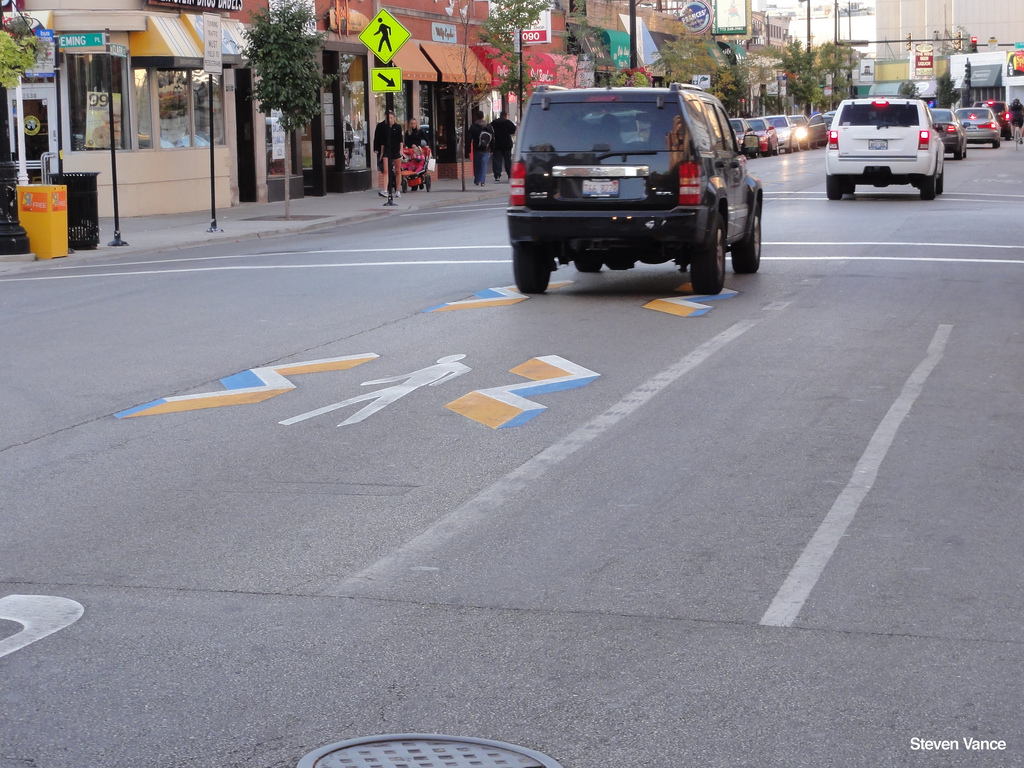The Oklahoma Department of Transportation is experimenting with a new way to make crosswalks more visible to motorists. This is welcome news, since many of Oklahoma’s state highways travel through walkable residential neighborhoods and main streets.
A Safer Crosswalk?
In October 2013, ODOT wrote the Federal Highway Administration (FHWA) to request permission to experiment with a new type of painted crosswalk. ODOT received approval and recently installed the new crosswalk, which uses multicolored paint to create an optical illusion of a three-dimensional raised surface when viewed from the perspective of drivers.
The new crosswalk is being tested on highway US-62B in Snyder, a town of 1,400 between Lawton and Altus in southwestern Oklahoma. The crosswalk connects a residential area to the south with an elementary school to the north. An accident involving a child pedestrian sparked the interest in improving the safety of the crosswalk.


Experimenting and Measuring Success
Engineers designed the new paint pattern to be compatible with existing guidelines, with a standard continental “zebra stripe” crosswalk framed by additional colored paint between the stripes to create a 3D illusion. The design was tested with spray paint at an ODOT test facility.

The crosswalk will remain in place for two years while ODOT measures its effectiveness and reports progress to the FHWA. The following information that will be observed and recorded:
- Vehicle-to-vehicle and pedestrian crash data
- When and where drivers touch brakes to slow down for the crosswalk
- Percentage of drivers yielding to pedestrians in and near the crosswalk
- Reactions of vehicles behind initial driver
- Age and behavior of drivers in vehicles
Similar Efforts
Several cities have tested the use of paint to create 3D illusions to influence traffic patterns. ODOT cites similar traffic calming experiments in Chicago as an inspiration for the crosswalk design. This photo by Steven Vance shows 3D markings used in Chicago beginning in 2010.

Next Steps
So, will 3D crosswalks be appearing all over Oklahoma soon? The experiment could open the door for ODOT to use the design to increase crosswalk visibility on state highways. If successful, the design could then trickle down to local public works departments for use on city streets.
Congrats to ODOT for this innovative work on a new approach to improve pedestrian safety. We can see the colorful, interesting appearance of this crosswalk being a great fit for the many pedestrian-oriented creative districts across Oklahoma.
Additional Information
Read ODOT’s experimentation request to the FHWA: (PDF Download)
Read the FHWA’s response: (PDF Download)
